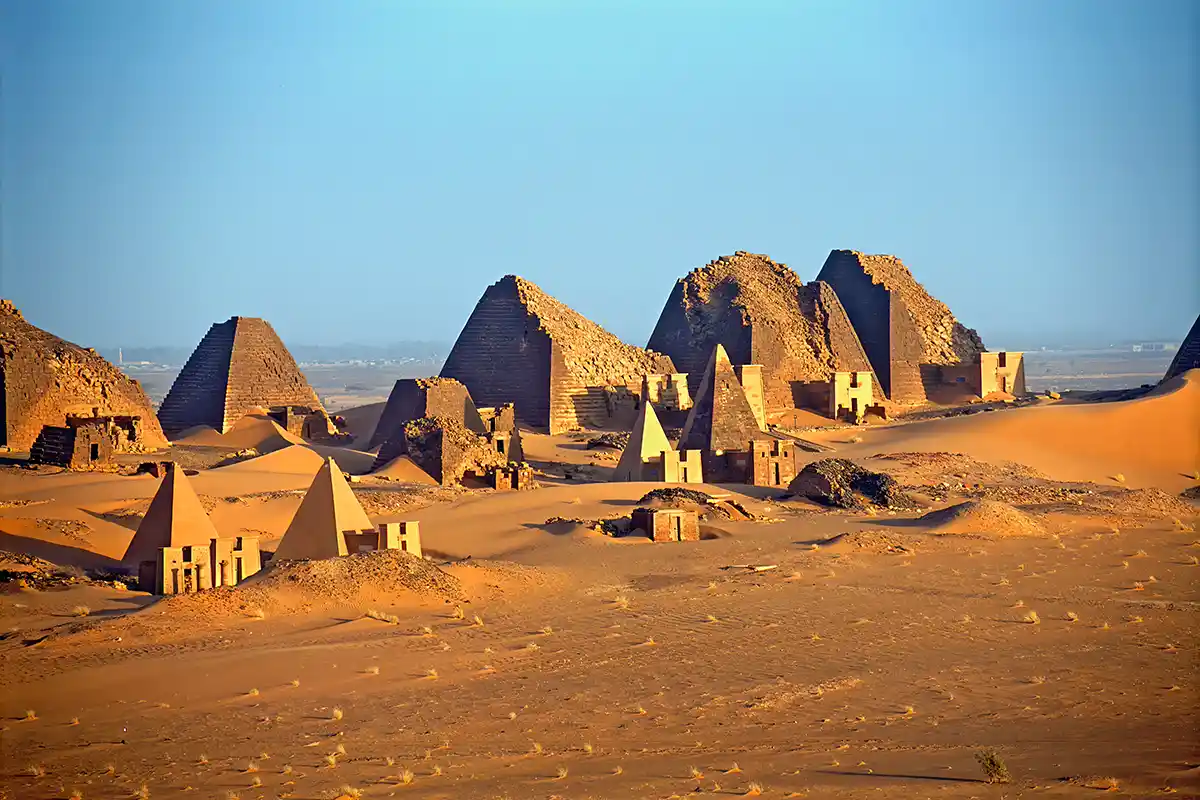Sacred Sites of Sudan
Sudan: Ancient Legacies and Spiritual Traditions
Sudan, situated in northeast Africa, houses a remarkable heritage of sacred sites interwoven with ancient kingdoms, spiritual beliefs, and the influential role of Islam. These sites tell stories of faith's dynamic interplay with shifting histories and cultural identities within Sudan's borders.
Pyramids of Meroe
Within the ancient city of Meroe, a UNESCO World Heritage Site, stands a striking desert landscape punctuated by numerous pyramids. These structures, though smaller than their famed Egyptian counterparts, served as royal burial sites for the Meroitic civilization. They reveal a distinct mortuary architectural tradition and speak to the power and spiritual beliefs that once reigned in this region of the Nile Valley.
Jebel Barkal and the Napatan Region
Jebel Barkal, a distinctive small mountain near the Nile River, was considered profoundly sacred in ancient Nubia. Temples dedicated to the Egyptian deity Amun, the pharaohs, and local deities flourished there. For those interested in Nubian and Kushite spiritual practices, Jebel Barkal, along with surrounding archaeological sites like El-Kurru, Nuri, and Sanam, offer rich glimpses into a complex blend of Egyptian and indigenous religious traditions.
Sufi Shrines and Tombs
Islam holds a deeply rooted position within Sudan's spiritual landscape. Across the country, numerous shrines and tombs dedicated to revered Sufi saints attract dedicated followers. These pilgrimage sites often feature domed structures adorned with decoration. Sites like the tomb of Sheikh Hamed el-Nil along the Nile and the colorful Sheikh Qubba Al-Nil on Omdurman island reveal the ongoing importance of Sufi practices and a connection to revered spiritual leaders.
Christian Heritage Sites
Prior to the widespread adoption of Islam, Christianity flourished in parts of Sudan, especially within the Nubian kingdoms. Remains of cathedrals and monasteries exist as remnants of this era, demonstrating an earlier chapter in the nation's diverse religious history. Though not active pilgrimage centers today, they reveal the dynamic shifts in religion that have shaped Sudan over centuries.
Modern Mosques and Islamic Centers
Islam's enduring legacy shapes both Sudan's landscape and the contemporary practice of faith. Many of the country's major cities boast striking mosques, some with towering minarets, while prayer calls resonating across urban environments offer daily reminders of Islam's central role. These locations function as important community centers and sites of worship.
Traditional Beliefs and Natural Landscapes
Sudan's varied ethnic and tribal groups retain unique practices stemming from traditional beliefs that coexist alongside dominant religions. Reverence for specific mountains, forests, or other natural sites can be deeply rooted within community spiritual identities. Although they might not feature grand constructions, these seemingly less "monumental" locations often hold tremendous importance for those with ancestral or cultural ties to them.
Sudan's array of sacred sites, past and present, showcases how beliefs intertwined with changing social structures and shifting influences define its multi-layered spiritual landscape. From the enduring presence of Meroe's pyramids to the dynamic practice of Islam today, Sudan invites travelers to trace the historical influence of religion on its culture and people.
Note:
Sudan's ongoing political complexities must be carefully considered when planning travel there. However, exploring these sites remotely offers a meaningful encounter with its rich history and cultural heritage.

Martin Gray is a cultural anthropologist, writer and photographer specializing in the study of pilgrimage traditions and sacred sites around the world. During a 40 year period he has visited more than 2000 pilgrimage places in 160 countries. The World Pilgrimage Guide at sacredsites.com is the most comprehensive source of information on this subject.

